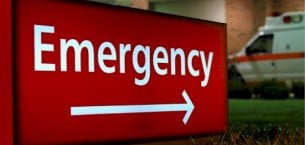Obamacare ‘designed’ to close rural hospitals
The Affordable Care Act, commonly known as Obamacare, is forcing many rural hospitals to close – just like it was meant to do, according to the former president of the Association of American Physicians and Surgeons.
 “I think that’s what the ACA was really designed to bring about,” said Dr. Lee Hieb. “You can say it’s an unintended consequence. I’m not sure; I think it’s an intended consequence.”
“I think that’s what the ACA was really designed to bring about,” said Dr. Lee Hieb. “You can say it’s an unintended consequence. I’m not sure; I think it’s an intended consequence.”
Forty-eight rural hospitals have closed since 2010 and 283 others are in danger of closing, according to the Washington Post . Most of those closures were in the South, with 10 of them in Texas alone.
Hieb, a practicing orthopedic surgeon and author of “Surviving the Medical Meltdown: Your Guide to Living Through the Disaster of Obamacare,” believes leftists want health care to be as centralized as possible. This means fewer hospitals and fewer specialists.
Rural hospitals are ripe for closures because they tend to serve more elderly and poor patients, which translates to more Medicare and Medicaid patients. Many of these hospitals have been losing money lately because the federal government, under the Affordable Care Act, has cut back on Medicare and Medicaid reimbursements to doctors and hospitals.
“Up until now, hospitals have failed and succeeded, they’ve come and gone just like businesses,” Hieb said. “Some are better-run than others, but the economic deck was not totally stacked against them. Now, unfortunately, the economic deck is stacked against them in such a way that, universally, smaller hospitals are disenfranchised.”
Dr. Hieb went so far as to compare the shuttering of rural hospitals to the infamous Reichstag fire, which some believe was a false flag attack by Nazi Germany.
“This is going to be like the Reichstag fire,” Hieb proclaimed. “It’s going to be an excuse to say, ‘Look, the free market failed, and now we can go in and institute universal health care, because you see, these people in these rural areas need healthcare, and you’re not getting it to them.’
Hieb predicted the closure of rural hospitals in “Surviving the Medical Meltdown.” In the book, she warns, “In the near future, there will be many underserved areas. Finding a doctor will be harder and harder, especially for the poor, the rural, and the elderly.”
She says the government often deems certain treatments “unnecessary” in order to avoid having to reimburse providers for them.
The result is predictable: economic failure of hospitals and physician practices that have become dependent on government payment for large segments of their population,” Hieb says. “The hospitals and offices that will close are those with the least private insurance.”
Hieb explains that “whereas private insurance might pay the surgeon $4,500 for a spinal surgery (my specialty), Medicare paid less than $1,200.”
Once rural hospitals close, it creates a snowball effect, according to Hieb. Doctors will move to areas where hospitals are still viable – areas with a high ratio of private insurance to government insurance. The few doctors who remain in rural areas will see their workloads increase, leading to stress. Hieb herself experienced a situation like this when she worked at a hospital in Arizona that served many Medicare patients.
“In general medicine and other areas, hospital on-call nights were so brutal – keeping doctors up all night in spite of working all the next day – that all the doctors who could function outside the hospital chose to leave the hospital staff for purely outpatient practices,” Hieb wrote. “Those who could afford to retire did so. And in orthopedics, we were left with four surgeons doing the work that was being done elsewhere by 10 or more.”
So the increased patient loads will take a toll on the physicians who remain, driving even more of them away. In fact, many of them will not simply move away or retire, but actually take their own lives. Hieb points out that physicians have the highest suicide rate of any profession. They are 1.87 times as likely to kill themselves as the average American worker.
Once the supply of doctors in an area has been depleted, Hieb notes, it becomes harder to replenish the supply.
“In areas where fewer and fewer physicians remain, it is very difficult to recruit new physicians to the job – since the new docs do not want to be forced to cover impossible patient loads,” Hieb says. “Around the country, there are already these medical ‘black holes’ – areas without coverage for certain specialties.”
One such “black hole” is in eastern Texas, where the East Texas Medical Center Regional Healthcare System ended inpatient care at the hospitals in the rural communities of Gilmer and Mount Vernon at the end of 2014. An ETMC official blamed the closures partly on cuts in Medicare and Medicaid reimbursements, a product of Obamacare.
“Poor utilization and declining reimbursements across the board make providing inpatient care unfeasible,” said Perry Henderson, ETMC senior vice president for affiliate operations, according to the Tyler Morning Telegraph . “When you average only two to four patients a day, you can’t even begin to cover the overhead costs associated with providing quality inpatient care. This underutilization combined with declining reimbursements rates, especially from Medicare and Medicaid, led to unsustainable losses at the hospital.”
http://www.wnd.com/2015/03/obamacare-designed-to-close-rural-hospitals/
